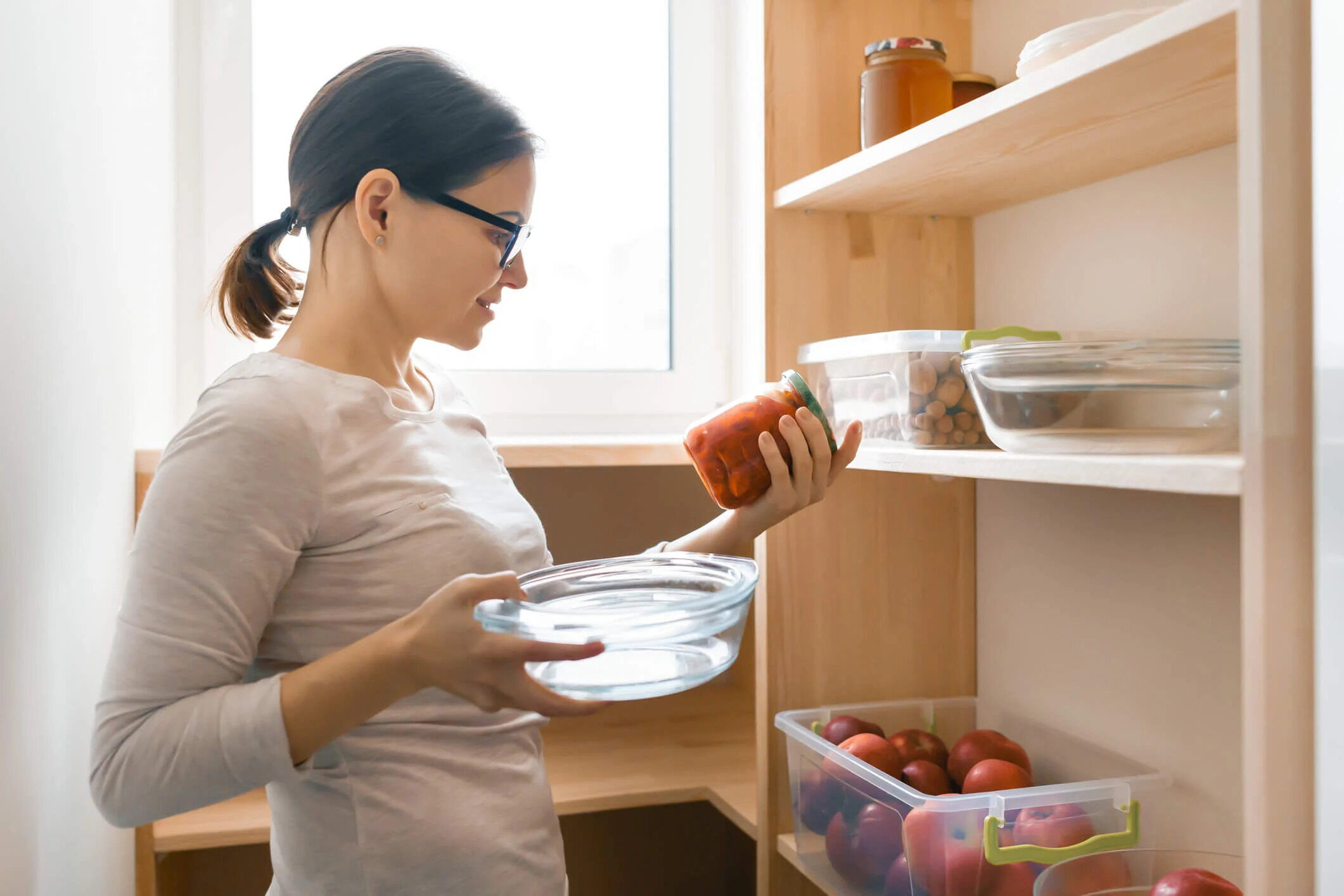

Articles
How To Store Foods Properly
Modified: January 18, 2024
Discover effective ways to store foods properly with our informative articles. Learn the best tips and techniques for long-lasting freshness and preservation.
(Many of the links in this article redirect to a specific reviewed product. Your purchase of these products through affiliate links helps to generate commission for Storables.com, at no extra cost. Learn more)
Introduction
Properly storing food is essential for maintaining its quality, prolonging its shelf life, and ensuring its safety for consumption. Whether you’re stockpiling supplies, managing leftovers, or trying to keep your fresh produce from spoiling too soon, implementing effective food storage techniques is key.
Food storage goes beyond simply sticking items in the fridge or pantry. It requires knowledge of optimal temperature ranges, understanding the factors that contribute to spoilage, and following best practices to maintain freshness and prevent contamination. By taking the time to learn the proper techniques, you can reduce food waste, save money, and even enhance the flavors of your meals.
In this article, we will explore the importance of proper food storage, how temperature affects storage, and provide guidelines for storing different types of food. Whether you’re a cooking enthusiast or simply striving to minimize food waste, this guide will equip you with the knowledge needed to store your food properly and ensure you maximize its potential.
Key Takeaways:
- Proper food storage is crucial for maintaining quality, safety, and reducing waste. Understanding temperature, separation, and handling practices ensures fresh, nutritious meals and minimizes the risk of foodborne illnesses.
- By implementing proper food storage techniques, we contribute to a sustainable and efficient food system. Mindful storage, utilizing proper containers, and staying vigilant about expiration dates reduce waste and enhance the overall quality of our meals.
Read more: How To Store Honey Properly
Importance of Proper Food Storage
Proper food storage is essential for several reasons. Firstly, it helps maintain the quality and nutritional value of food. By storing food correctly, you can preserve its flavor, texture, and appearance, ensuring that it remains appetizing and enjoyable to consume.
Secondly, proper food storage helps to prevent foodborne illnesses. When food is not stored at the correct temperature or is exposed to potential contaminants, it can become a breeding ground for bacteria, viruses, and other harmful pathogens. Consuming contaminated food can lead to gastrointestinal issues, food poisoning, and other health complications.
Thirdly, proper food storage plays a crucial role in reducing food waste. When food is not stored correctly, it can spoil quickly, leading to unnecessary discards. By following proper storage techniques, you can extend the shelf life of your food, reducing waste and saving money in the process.
Additionally, proper food storage allows for better meal planning and organization. When you store your food properly, you can easily see what ingredients you have available and plan your meals accordingly. It also helps to keep your kitchen tidy and prevents clutter by avoiding unnecessary purchases or duplicates of items you already have.
Ultimately, by understanding the importance of proper food storage, you can contribute to a more sustainable and efficient food system. By reducing waste and preventing foodborne illnesses, we can minimize our impact on the environment and ensure that everyone has access to safe and nutritious food.
Understanding Food Spoilage
Food spoilage refers to the deterioration in the quality and safety of food, rendering it unfit for consumption. Understanding the factors that contribute to food spoilage is crucial for implementing proper storage practices and reducing the risk of consuming spoiled food.
There are several factors that can contribute to food spoilage, including:
- Microorganisms: Bacteria, yeasts, and molds are common microorganisms that can grow on food and cause spoilage. These microorganisms break down the food’s nutrients, produce toxins, and result in unpleasant odors and flavors.
- Enzymes: Enzymes naturally present in food can accelerate chemical reactions and lead to spoilage. These enzymes are more active at higher temperatures, so proper storage at optimal temperatures can help slow down their activity.
- Oxygen: Some foods, particularly those high in fat, can undergo oxidative spoilage when exposed to air. This can result in rancid flavors and a deterioration in texture.
- Temperature: Incorrect storage temperatures can significantly impact the rate of spoilage. High temperatures can accelerate the growth of bacteria, while low temperatures may cause freezing damage or inhibit natural ripening processes in fruits and vegetables.
- Moisture: Excess moisture can promote the growth of bacteria, mold, and yeast. It can also cause foods to become soggy or develop a slimy texture.
It’s important to be able to recognize the signs of food spoilage to avoid consuming unsafe or unpalatable food. Common indicators of spoilage include changes in color, texture, and smell. Mold growth, sliminess, off-putting odors, and unusual tastes are clear signs that the food is no longer safe to eat.
By understanding the factors that contribute to food spoilage and recognizing the signs of spoilage, you can take the necessary steps to store your food properly and reduce the risk of consuming spoiled or contaminated food.
How Temperature Affects Food Storage
The temperature at which food is stored plays a critical role in determining its shelf life and safety. Different types of food have specific temperature requirements to maintain their quality, freshness, and prevent the growth of harmful bacteria.
For fresh perishable foods such as meats, dairy products, and certain fruits and vegetables, storing them at temperatures below 40°F (4°C) is crucial. This temperature range helps slow down bacterial growth, delaying spoilage and maintaining freshness. Refrigerators are the ideal storage option for these types of foods.
On the other hand, some foods can be safely stored at room temperature, typically between 50°F (10°C) and 70°F (21°C). These include dry goods like canned foods, bread, and certain condiments. However, it’s essential to check the specific storage requirements for each product, as some may still need to be refrigerated or require a cool, dark place for optimal longevity.
Freezing is another effective method of food storage. The extremely low temperatures of a freezer, typically below 0°F (-18°C), inhibit the growth of microorganisms and slow down the chemical reactions that lead to spoilage. Freezing can significantly extend the shelf life of many foods, including meats, vegetables, bread, and pastries.
It’s important to note that repeatedly freezing and thawing certain foods can affect their texture and quality. For example, meats can become dry and lose flavor when subjected to multiple freeze-thaw cycles. Hence, it’s best to portion out food before freezing to minimize the need for repeated thawing.
Furthermore, it is crucial to handle and store foods appropriately when transitioning between temperature zones. Avoid keeping perishable foods at room temperature for an extended period, as this can create an environment favorable for bacterial growth.
In summary, maintaining the right storage temperature is essential for preserving food quality and safety. Understanding the optimal temperature requirements for different types of food and applying them consistently can help maximize their shelf life, minimize food waste, and reduce the risk of foodborne illnesses.
Refrigerator Storage Guidelines
The refrigerator is a crucial appliance for preserving the freshness and safety of perishable foods. However, it’s important to understand how to organize and store items correctly to maximize their shelf life and prevent cross-contamination. Here are some refrigerator storage guidelines to follow:
- Temperature: Keep your refrigerator set at a temperature below 40°F (4°C). This helps slow down bacterial growth and maintains the quality of perishable foods.
- Raw Meats: Store raw meats, poultry, and seafood in sealed containers or securely wrapped to prevent them from contaminating other foods. Place them on the bottom shelf or in a designated meat drawer to prevent any potential drips from coming into contact with other items.
- Dairy Products: Dairy products such as milk, cheese, and yogurt should be stored on the upper shelves, where the temperature is most consistent. Ensure that they are tightly sealed to prevent absorption of odors from other foods.
- Fruits and Vegetables: Most fruits and vegetables should be stored in the crisper drawer, which helps maintain their moisture levels and prolong their freshness. However, some fruits, like bananas and apples, should be stored separately as they release ethylene gas, which can accelerate the ripening of other produce.
- Eggs: Store eggs in their original carton on a shelf, rather than the door, where the temperature is more consistent. This will help prevent them from absorbing odors from other foods.
- Leftovers: Leftovers should be stored in airtight containers and placed on the top shelf to ensure they are easily visible and consumed before they spoil. Label them with the date to keep track of their freshness.
- Condiments: Condiments like ketchup, mustard, and mayonnaise can be stored on the refrigerator door, as they have a longer shelf life due to their high vinegar or acid content.
- Raw and Cooked Foods: Raw and cooked foods should be kept separate to avoid cross-contamination. Store cooked foods in covered containers and place them above raw meats to prevent any drips from contaminating them.
- Expiration Dates: Regularly check the expiration dates of packaged foods and discard them if they have passed their recommended shelf life.
By following these refrigerator storage guidelines, you can maintain the freshness, safety, and quality of your food items, reducing waste and ensuring that your meals are preserved in optimal conditions.
Read more: How To Store Ginger Properly
Freezer Storage Guidelines
The freezer is a valuable tool for extending the shelf life of various foods, allowing you to stock up on essentials and preserve perishable items for longer periods. However, proper storage techniques are crucial to maintain the quality and safety of frozen foods. Here are some freezer storage guidelines to follow:
- Temperature: Set your freezer temperature to 0°F (-18°C) or below. Maintaining this low temperature helps preserve the quality and nutritional value of frozen foods.
- Packaging: Proper packaging is essential to prevent freezer burn, which occurs when foods are exposed to air. Use moisture-resistant and airtight packaging, such as freezer-safe bags, foil, or plastic containers, to protect the food from freezer burn.
- Labeling: Always label your frozen items with the contents and the date of freezing. This will help you keep track of how long items have been in the freezer and ensure that you use them within recommended time frames.
- Portioning: Divide larger items into smaller portions before freezing. This allows for easier defrosting and reduces the need to thaw the entire item, minimizing the risk of refreezing and compromising its quality.
- Raw Meats: Raw meats should be tightly wrapped and stored in a separate freezer bag or container to prevent potential cross-contamination with other foods. Place them on the bottom shelf to avoid any drips onto other items.
- Frozen Fruits and Vegetables: Wash and dry fruits and vegetables before freezing to remove any dirt or bacteria. For optimal quality, blanch vegetables by briefly cooking them in boiling water and immediately placing them in an ice bath to stop the cooking process. Pat them dry before freezing.
- Baked Goods: Baked goods, such as bread, muffins, and cakes, can be wrapped tightly in plastic wrap or aluminum foil before freezing. Alternatively, freeze individual portions in freezer bags for easy grab-and-go options.
- Liquid Items: Liquids, such as soups, stews, and sauces, should be cooled completely before freezing. Use freezer-safe containers or freezer bags, leaving some room for expansion as liquids may expand when frozen.
- Freezer Organization: Keep your freezer well-organized by using containers, baskets, or dividers to separate different types of foods. This makes it easier to locate items and prevents them from getting lost or buried at the bottom.
- Rotation: Practice “first in, first out” (FIFO) rotation, where you consume older frozen items before using newer ones. This ensures that all items are used within their recommended storage periods.
Following these freezer storage guidelines will help you maintain the quality, flavor, and safety of your frozen foods. By correctly packaging and organizing your freezer, you can maximize the shelf life of various items and minimize the risk of waste.
Pantry Storage Guidelines
The pantry is a convenient storage space for dry goods and non-perishable items, such as canned goods, grains, spices, and baking essentials. To keep your pantry organized and ensure the longevity of these items, it’s important to follow pantry storage guidelines. Here are some tips to help you store your pantry items properly:
- Temperature and Humidity: Pantry items should be stored in a cool, dark, and dry area. Avoid exposing them to direct sunlight, heat sources, or areas with high humidity, as this can compromise their quality and shorten their shelf life.
- Organizational Tools: Use shelves, bins, or clear containers to keep your pantry organized. This makes it easier to see what you have, prevents items from getting lost or forgotten, and allows for better rotation of items.
- Canned Goods: Store canned goods in a cool, dry place. Avoid keeping them near heat sources, as excessive heat can cause spoilage or affect the quality of the contents. Check the expiration dates regularly and consume older cans first.
- Grains and Legumes: Store grains, such as rice, pasta, and quinoa, in airtight containers to protect them from moisture, pests, and potential contaminants. Label the containers with the type of grain and the date of purchase for easy identification and rotation.
- Spices: Keep spices in airtight containers away from heat, moisture, and light sources. Store them in a cool and dry place to maintain their flavor and potency. Consider buying whole spices and grinding them as needed for optimal freshness.
- Baking Essentials: Store baking essentials, such as flour, sugar, and baking powder, in airtight containers to prevent moisture absorption and pest infestation. Place them in a cool, dry area to maintain their quality.
- Oil and Vinegar: Store oils and vinegar in cool, dark areas to prevent oxidation and maintain their flavors. Avoid placing them near the stove or other heat sources, as exposure to heat can cause them to go rancid more quickly.
- Nuts and Seeds: Nuts and seeds should be stored in sealed containers in a cool area or in the refrigerator to maintain their freshness and prevent them from turning rancid. Consider using airtight containers or resealable bags to protect them from moisture and pests.
- Dried Herbs: Dried herbs should be stored in airtight containers away from heat, moisture, and light to preserve their flavors. Consider storing them in a cool pantry or, for maximum freshness, in the refrigerator.
- Pantry Inventory: Regularly check your pantry for expired or spoiled items. Discard any cans that are dented, bulging, or leaking, as these can be signs of food spoilage or bacterial growth.
By following these pantry storage guidelines, you can keep your dry goods fresh, organized, and readily available for your culinary needs. Proper storage practices contribute to maintaining the quality, flavor, and safety of pantry items for an extended period.
Store foods properly by keeping raw meats separate from other foods to prevent cross-contamination. Use airtight containers for leftovers and keep perishable items in the refrigerator at the appropriate temperature.
Tips for Properly Storing Fruits and Vegetables
Fruits and vegetables are an essential part of a healthy diet, and proper storage is crucial to maintain their freshness, flavor, and nutritional value. Here are some tips to help you store your fruits and vegetables properly:
- Separate Ethylene Producers and Ethylene-Sensitive Items: Some fruits, such as apples, bananas, and tomatoes, produce a natural gas called ethylene, which speeds up the ripening process. Store ethylene-producing fruits away from ethylene-sensitive items, such as leafy greens, berries, and mushrooms, to prevent premature spoilage.
- Store Fruits and Vegetables Separately: Fruits and vegetables have different storage requirements. Fruits like apples and avocados can be stored on the countertop until ripe and then transferred to the refrigerator to prolong their shelf life. Most vegetables, however, should be stored in the refrigerator to maintain their freshness.
- Remove Rubber Bands and Twist Ties: Remove rubber bands and twist ties from leafy greens and herbs before storing. Wrapping them loosely in a damp paper towel and placing them in a plastic bag or airtight container can help maintain their moisture content and extend their shelf life.
- Keep Berries Dry: Berries are highly perishable and tend to spoil quickly when exposed to moisture. Store them in their original containers or a paper towel-lined container to absorb excess moisture. Only wash berries just before consuming to avoid premature spoilage.
- Group Similar Items Together: Store similar fruits and vegetables together to optimize storage conditions and make it easier to find what you need. For example, store root vegetables like potatoes, carrots, and onions in a cool, dark area away from other produce.
- Do Not Wash Before Storage: It’s best to avoid washing fruits and vegetables before storing them, as moisture can promote mold and decay. Instead, wash them just before consuming to remove any dirt or bacteria.
- Monitor and Remove Spoiled Items: Regularly check stored fruits and vegetables for signs of spoilage or mold. Remove any spoiled items immediately to prevent them from contaminating other produce.
- Utilize the Crisper Drawer: Most refrigerators have a crisper drawer specifically designed to keep fruits and vegetables fresh. Adjust the humidity settings according to the produce you’re storing. Low humidity is ideal for crisp fruits, while high humidity is suitable for leafy greens and delicate vegetables.
- Consider Freezing: If you have excess fruits or vegetables, consider freezing them for long-term storage. Wash, chop, and blanch them before freezing to maintain their quality and reduce freezer burn. Label and date the containers or freezer bags for easy identification.
- Make Use of Preserving Methods: Preserve seasonal fruits and vegetables by canning, pickling, or making jams and sauces. These methods can help extend their shelf life and allow you to enjoy the flavors of fresh produce all year round.
By following these tips for properly storing fruits and vegetables, you can prolong their freshness, flavor, and nutritional value. Implementing these practices will help reduce waste and provide you with a steady supply of delicious and nutritious produce.
Best Practices for Storing Meats and Seafood
Proper storage of meats and seafood is essential for maintaining their freshness, quality, and safety. Follow these best practices to ensure that your meats and seafood stay in optimal condition:
- Refrigeration: Perishable meats and seafood should be stored in the refrigerator at a temperature below 40°F (4°C). This helps slow down bacterial growth and prevents spoilage. Ensure that the refrigerator is set to the correct temperature and the items are kept in airtight containers or wrapped tightly in plastic wrap or foil.
- Separation: To prevent cross-contamination and the spread of bacteria, store different types of meats and seafood separately. Keep them in sealed containers, preferably on the lower shelves or in a designated meat drawer to prevent any potential drips from contaminating other foods.
- Use-By Dates: Pay attention to the use-by dates on meat and seafood packaging. Consume or freeze the items before the expiration date to ensure their quality and safety.
- Freezing: If you won’t be consuming the meat or seafood within a few days, it is advisable to freeze them. Wrap the items tightly in freezer-safe packaging, removing as much air as possible to prevent freezer burn. Label and date the packages for easy identification and consume within the recommended storage time.
- Thawing: When thawing frozen meats and seafood, it’s best to do so in the refrigerator or using the defrost setting on a microwave. Avoid thawing at room temperature, as bacteria can multiply rapidly in the danger zone of 40°F (4°C) to 140°F (60°C).
- Marinating: If you plan to marinate meats or seafood, do it in the refrigerator rather than at room temperature. Discard any leftover marinade that has come into contact with raw meat or seafood, as it can contain harmful bacteria.
- Proper Handling: When handling raw meat or seafood, practice good hygiene by washing your hands thoroughly with soap and hot water before and after handling. Use separate cutting boards and utensils for raw and cooked foods to avoid cross-contamination.
- Smell and Texture: Pay attention to the smell and texture of meat and seafood. If they have an off-putting odor, slimy texture, or unusual color, it may indicate spoilage, and they should be discarded.
- Seafood Storage: Fresh seafood, such as fish and shellfish, is highly perishable and should be consumed as soon as possible. If you plan to store seafood, keep it on a bed of ice in a leak-proof container to maintain its freshness. Avoid storing live shellfish in closed containers, as they need to breathe.
- Leftovers: Cooked meat and seafood leftovers should be placed in shallow, airtight containers and stored in the refrigerator within two hours of preparation. Use them within three to four days or freeze for longer storage.
By following these best practices for storing meats and seafood, you can ensure that they remain fresh, safe, and enjoyable to consume. Proper storage techniques are essential for preventing foodborne illnesses and maximizing the quality of these perishable items.
Read more: How To Properly Store Tofu
How to Store Dairy Products
Proper storage of dairy products is important to maintain their freshness, flavor, and safety. Here are some guidelines to help you store different types of dairy products:
Milk:
- Store milk in its original container or transfer it to a clean, airtight container.
- Place milk on a shelf in the refrigerator where the temperature is most consistent, typically towards the back.
- Keep milk away from strong-smelling foods, as it can absorb odors easily.
- Always check the expiration date before consuming milk. Consume it before or on the indicated date for best quality.
Cheese:
- Wrap cheese tightly in wax paper, parchment paper, or aluminum foil to prevent it from drying out and absorbing odors.
- Store cheese in the refrigerator’s cheese or vegetable drawer, where humidity levels are usually higher.
- Hard and semi-hard cheeses, such as cheddar or Swiss, can be stored for longer periods. Soft cheeses, like Brie or Camembert, should be consumed within a few days of opening.
- Before consuming, inspect cheese for any signs of mold or spoilage. Cut off any affected areas before enjoying the remaining portion.
Yogurt:
- Keep yogurt refrigerated at all times to prevent the growth of bacteria.
- Store yogurt containers in the refrigerator’s main compartment, away from strong-smelling foods.
- Consume yogurt before the expiration date for optimal texture and taste. Discard any containers with visible signs of mold or off-putting odors.
Butter:
- Store butter in its original packaging, or transfer it to an airtight container or butter dish.
- Keep butter in the refrigerator, but it can also be kept at room temperature for short periods if it will be used quickly.
- To prolong the shelf life of butter, avoid exposing it to air as much as possible. Consider cutting off smaller portions from a larger stick, if needed.
Sour Cream and Cream Cheese:
- Keep sour cream and cream cheese in their original containers or transfer them to airtight containers to prevent them from absorbing other odors.
- Store these dairy products in the refrigerator, usually on the main shelf or cheese drawer.
- Check the expiration date and consume them before or on that date for best quality and flavor.
Whipped Cream:
- Keep whipped cream refrigerated at all times, in its original container or transfer it to an airtight container, if desired.
- Store whipped cream on the refrigerator shelf, away from foods with strong odors.
- Consume whipped cream within a few days of opening or follow the manufacturer’s recommended storage instructions.
By following these guidelines, you can ensure that your dairy products stay fresh, safe, and enjoyable to consume. Proper storage techniques help to maintain their quality and reduce waste.
Keeping Dry Goods Fresh
Proper storage of dry goods is essential to maintain their freshness, flavor, and quality over an extended period. Whether it’s pantry staples like flour, rice, or cereal, or specialty items like nuts or dried fruits, here are some tips to help you keep your dry goods fresh:
Containers:
- Transfer dry goods to airtight containers to protect them from moisture, pests, and air exposure. Opt for containers made of glass, plastic, or metal with tight-fitting lids.
- Clear containers can help you easily see the contents and monitor freshness levels.
- Label the containers with the name of the ingredients and the purchase or expiration date for easy identification and rotation.
Storage Location:
- Store dry goods in a cool, dry, and dark place away from direct sunlight or heat sources.
- Avoid areas with high humidity, as moisture can lead to spoilage or cause products to clump.
- Do not store dry goods near strong-smelling items, as they can absorb odors easily.
Flour:
- Place flour in airtight containers to prevent it from absorbing moisture and becoming rancid.
- Store flour in a cool area and away from direct sunlight to maintain its quality.
- Consider storing flour in the refrigerator or freezer for longer shelf life, especially in warmer climates.
Rice and Grains:
- Transfer rice and grains to airtight containers to protect them from moisture, pests, and contaminants.
- Keep rice and grains in a cool and dry place, and avoid exposing them to temperature fluctuations.
- Consider storing rice and grains in the refrigerator or freezer to extend their shelf life.
Cereal and Oats:
- Store cereal and oats in airtight containers to maintain their texture and prevent them from becoming stale.
- Keep them in a cool and dry place, away from heat and humidity.
- Consider storing cereal and oats in the refrigerator during hot and humid weather to preserve their freshness.
Nuts and Dried Fruits:
- Store nuts and dried fruits in airtight containers to prevent them from going rancid or becoming dry.
- Keep them in a cool and dry place to maintain their texture and flavor.
- Consider storing these items in the refrigerator or freezer for longer shelf life, especially in warm climates.
Spices and Herbs:
- Keep spices and herbs in airtight containers away from heat, moisture, and direct sunlight.
- Store them in a cool and dry place to maintain their potency and flavor.
- Consider buying whole spices and grinding them as needed for optimal freshness.
By following these tips, you can ensure that your dry goods stay fresh, flavorful, and ready to be used in your culinary creations. Proper storage techniques help to maintain the quality of these ingredients and minimize waste.
Storing Leftovers Safely
Leftovers are a convenient and economical way to enjoy your meals for an additional day or two. However, proper storage is crucial to maintain their safety and quality. Here are some tips for storing leftovers safely:
Cooling:
- Allow hot leftovers to cool down for no more than two hours at room temperature before refrigerating or freezing.
- Divide large portions into smaller, shallower containers to promote faster and more even cooling.
- Avoid placing hot leftovers directly in the refrigerator, as it can raise the overall temperature, potentially affecting the safety of other perishable foods.
Refrigeration:
- Refrigerate leftovers promptly, ideally within two hours of cooking, and never leave them at room temperature for more than two hours in total.
- Transfer leftovers to shallow airtight containers or wrap them tightly in aluminum foil or plastic wrap.
- Label the containers with the content and date to keep track of their freshness.
- Place the containers on the top shelf or in a specific section of the refrigerator dedicated to leftovers.
Freezing:
- If you don’t plan to consume the leftovers within a couple of days, consider freezing them for longer storage.
- Cool the leftovers completely before transferring them to freezer-safe containers or resealable freezer bags.
- Remove as much air as possible from the containers or bags to prevent freezer burn.
- Label the containers or bags with the contents and date of freezing.
- Consume frozen leftovers within three to four months for the best quality, although they can be safely stored longer.
Thawing:
- If you plan to use frozen leftovers, thaw them safely to maintain their texture and minimize the risk of bacterial growth.
- Thaw leftovers in the refrigerator, microwave, or under cold running water.
- Avoid thawing at room temperature to prevent the food from entering the temperature danger zone, where bacteria can multiply rapidly.
- Once thawed, consume the leftovers within two days, and do not refreeze unless they have been cooked.
Inspecting Leftovers:
- Carefully inspect leftovers before consumption. Discard any leftovers that have an off-putting odor, mold growth, or unusual texture.
- If in doubt about the safety of a leftover, it’s best to err on the side of caution and discard it to avoid the risk of foodborne illness.
By following these guidelines for storing leftovers safely, you can enjoy your meals with peace of mind, minimize food waste, and protect yourself from the potential risks of consuming spoiled food.
Conclusion
Proper food storage is vital for maintaining the quality, safety, and longevity of our food. By understanding the importance of proper storage techniques and implementing best practices, we can minimize food waste, reduce the risk of foodborne illnesses, and ensure that our meals are as flavorful and nutritious as possible.
From refrigerating perishable items to freezing meats and seafood, from organizing our pantries to storing dairy products and dry goods, each aspect of food storage plays a crucial role in preserving the freshness and safety of our food. By following guidelines such as separating ethylene producers and ethylene-sensitive items, utilizing airtight containers, and monitoring temperatures, we can extend the shelf life of our food and prevent cross-contamination.
Properly storing fruits and vegetables helps to maintain their flavor, texture, and nutrients, while storing meats and seafood with attention given to temperature, separation, and handling practices safeguards against spoilage and contamination. Additionally, understanding the specific storage needs of dairy products and dry goods allows us to keep them fresh and prevent deterioration.
By storing leftovers safely, we can enjoy the convenience of ready-made meals without compromising our health. Following guidelines such as prompt cooling, proper refrigeration, and appropriate thawing methods helps to maximize the quality and minimize the risk of bacterial growth when consuming leftovers.
In conclusion, by implementing proper food storage techniques, we contribute to a sustainable and efficient food system. We reduce food waste, save money, and ensure that everyone has access to safe and nutritious food. By being mindful of storage temperatures, utilizing proper containers, and staying vigilant about expiration dates, we can make a significant impact on reducing waste and enhancing the overall quality of our meals. So let’s embrace these guidelines and create a healthier, more sustainable food storage routine for ourselves and our communities.
Frequently Asked Questions about How To Store Foods Properly
Was this page helpful?
At Storables.com, we guarantee accurate and reliable information. Our content, validated by Expert Board Contributors, is crafted following stringent Editorial Policies. We're committed to providing you with well-researched, expert-backed insights for all your informational needs.


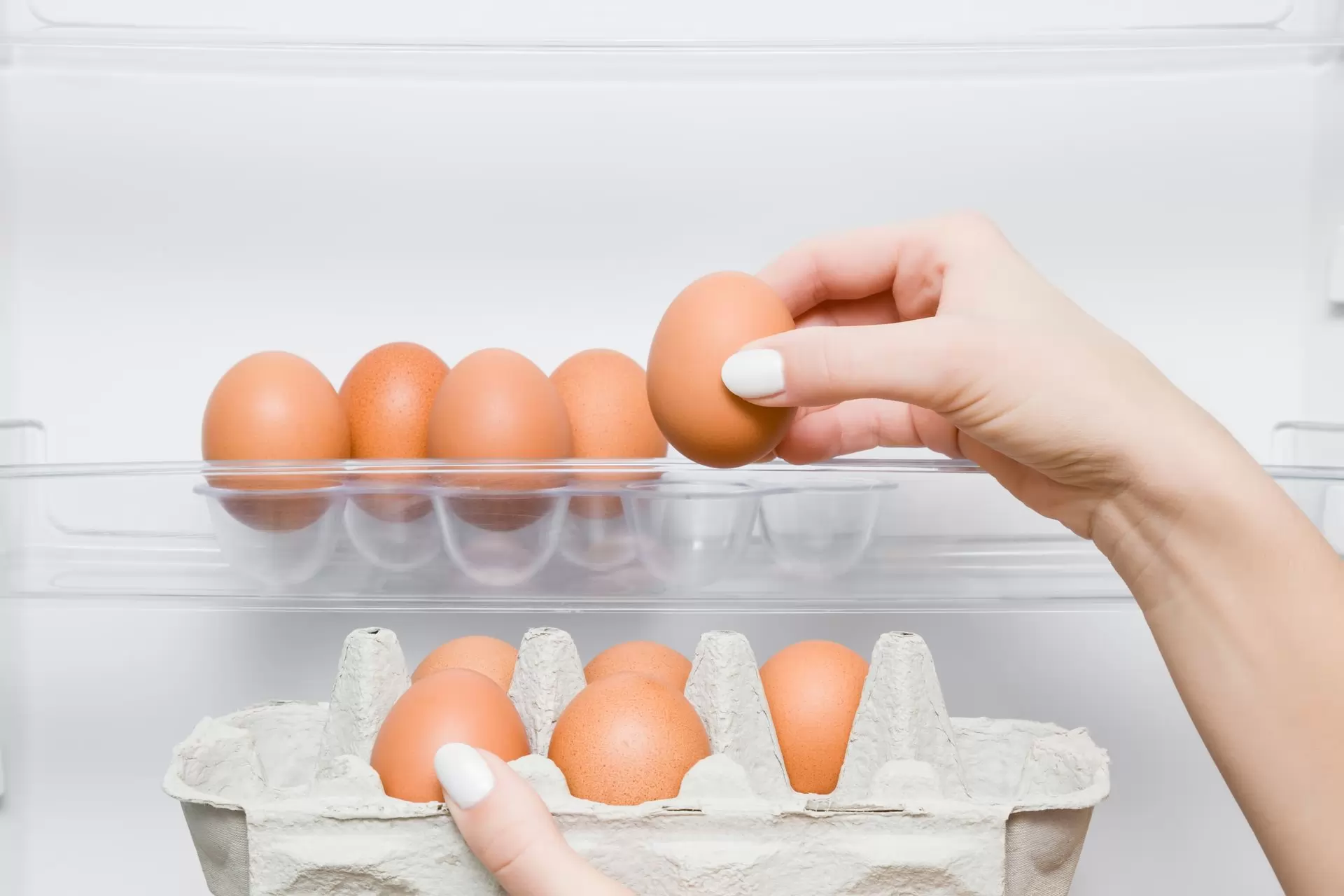

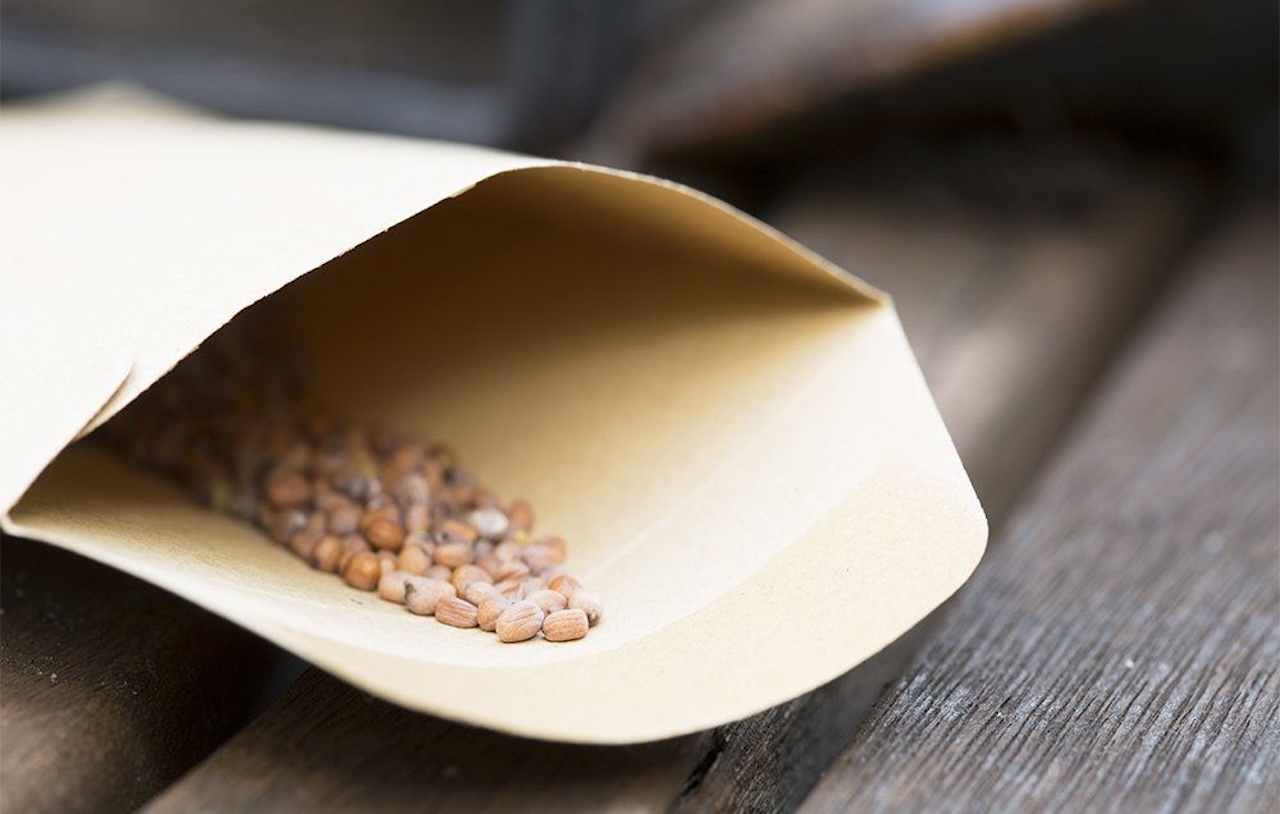
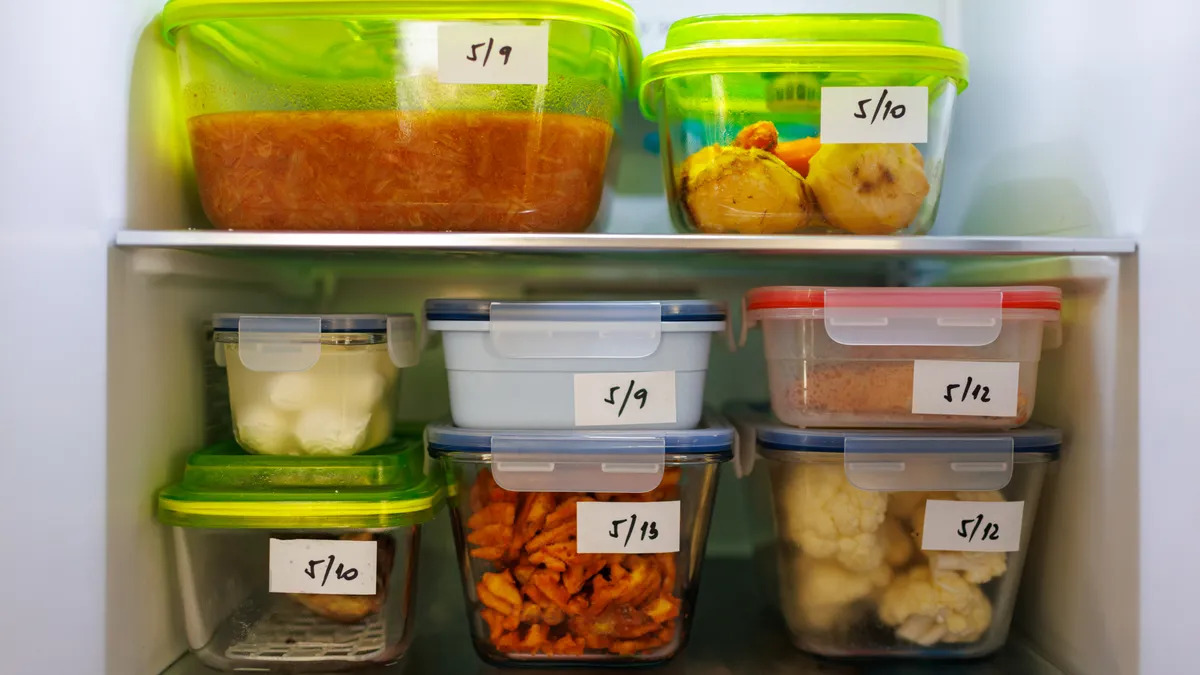

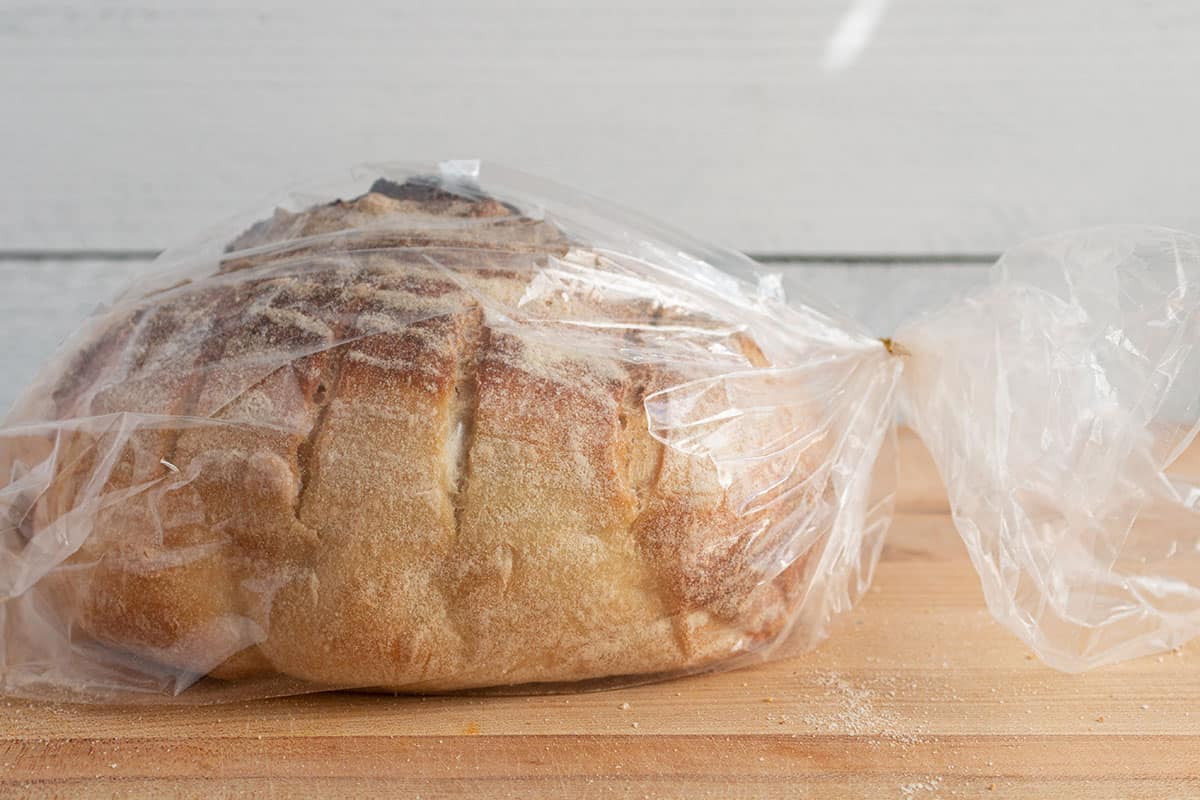






0 thoughts on “How To Store Foods Properly”